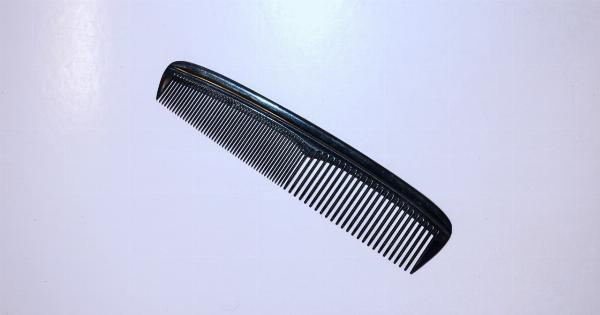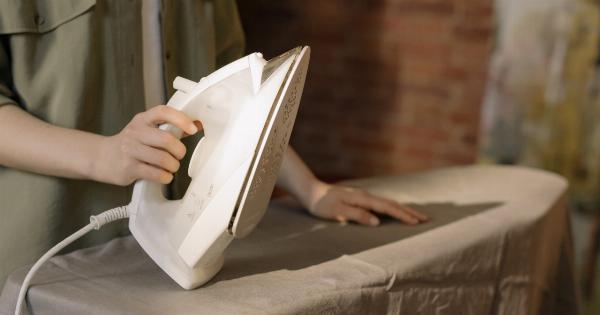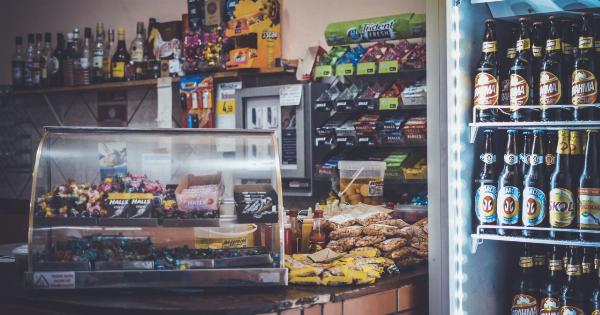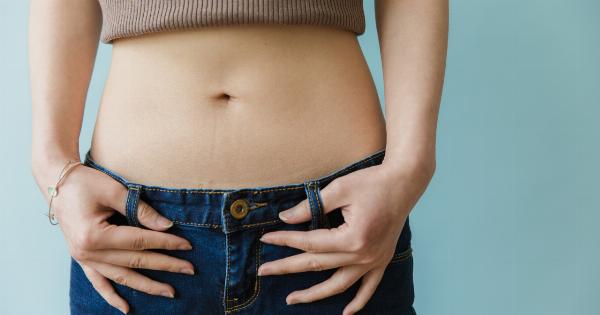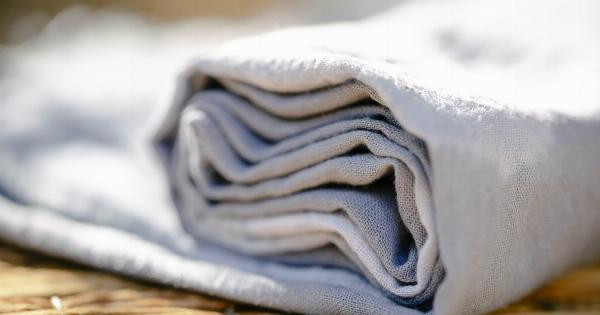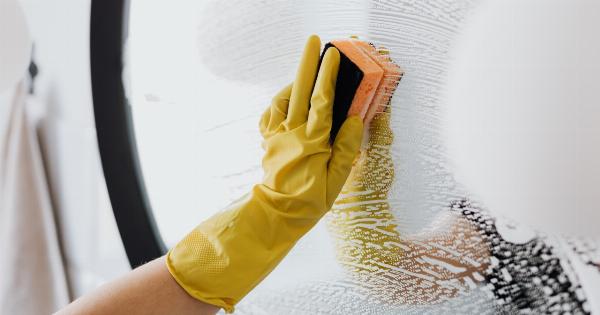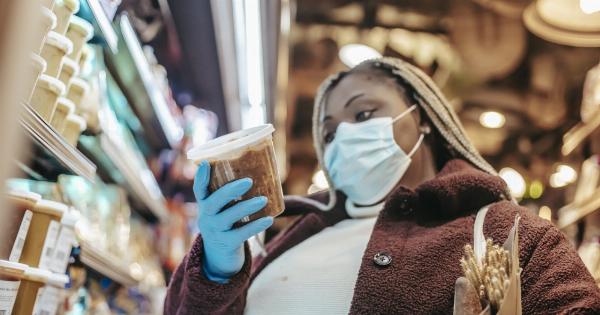Germs are everywhere, and some everyday items can be breeding grounds for bacteria and viruses. It’s important to be aware of these germy goods to take proper precautions and maintain good hygiene.
In this article, we will explore the top 30 items that can harbor germs and offer tips to keep them clean.
1. Kitchen Sponge
The humble kitchen sponge is a haven for bacteria. It’s often wet, warm, and brimming with food particles, making it an ideal breeding ground. To keep your sponge germ-free, microwave it for 1-2 minutes daily or replace it every week.
2. Cutting Board
Cutting boards, especially wooden ones, can harbor harmful bacteria such as E. coli and Salmonella. Use separate cutting boards for raw meat, vegetables, and other food items, and clean them with hot soapy water after each use.
Consider using a dishwasher-safe cutting board for added safety.
3. Cell Phone
Did you know that your cell phone can harbor more bacteria than a toilet seat? Frequently wipe down your phone with disinfectant wipes or a cloth dampened with a solution of water and rubbing alcohol.
Avoid taking your phone into the bathroom, as it can become contaminated there.
4. Toothbrush
Your toothbrush can be a breeding ground for bacteria, including E. coli and Staphylococcus. Replace your toothbrush every three to four months, or sooner if the bristles become frayed.
Rinse it thoroughly after each use and allow it to air dry between brushings.
5. Kitchen Sink
The kitchen sink is often overlooked when it comes to cleaning. However, it can harbor a variety of germs, including those from raw meat and vegetables.
Clean your sink regularly with hot soapy water and consider sanitizing it with a mixture of water and bleach once a week.
6. Computer Keyboard
The keys on your computer keyboard can be teeming with germs, including bacteria like Staphylococcus aureus.
Clean your keyboard regularly using compressed air to remove debris and a disinfectant wipe or cotton swab dipped in isopropyl alcohol to sanitize the keys.
7. TV Remote
The TV remote control is often handled by multiple people, making it a hotspot for germs. Wipe it down regularly with a disinfectant wipe or a cloth dampened with rubbing alcohol to minimize the spread of germs.
8. Handbag
Handbags accumulate germs from various surfaces, including floors, countertops, and public transportation. Clean your handbag regularly with a disinfectant wipe or a cloth dampened with a gentle soap and water solution.
Minimize placing it directly on the floor or other unclean surfaces.
9. Money
Currency notes and coins are frequently handled by numerous individuals, making them germ hotspots. Wash your hands thoroughly after handling money, especially before touching your face or eating.
Consider using hand sanitizer when handwashing facilities are not available.
10. Light Switches
Light switches are touched by almost everyone in a household, making them a breeding ground for bacteria. Clean light switches regularly with a disinfectant wipe or a cloth dampened with isopropyl alcohol to keep them free from germs.
11. Hand Towels
Hand towels can harbor germs, particularly if they are not changed frequently. Wash your hand towels every two to three days, or more often if they become visibly soiled. Consider using disposable paper towels in public restrooms.
12. Elevator Buttons
Elevator buttons are touched by a large number of people, including those who may not practice good hand hygiene. Avoid touching elevator buttons with your bare hands, if possible.
If you must touch them, refrain from touching your face until you can wash or sanitize your hands.
13. Reusable Shopping Bags
Reusable shopping bags are eco-friendly but can harbor harmful bacteria such as Escherichia coli (E. coli). Wash these bags regularly, either by hand or in the washing machine, following the manufacturer’s instructions.
14. Gym Equipment
Exercise equipment at the gym is frequently touched by multiple people, making it a potential breeding ground for germs.
Wipe down the equipment with a disinfectant wipe before and after use, and always wash your hands or use hand sanitizer after the workout.
15. Remote Control for Vehicles
The remote control for your car or garage door opener can also harbor germs. Clean it regularly with a disinfectant wipe or a cloth dampened with rubbing alcohol to reduce the risk of contamination.
16. Pet Food Bowls
Don’t forget about your furry friends! Pet food bowls can harbor bacteria such as Salmonella. Wash your pet’s food and water bowls with hot, soapy water after each use, and regularly sanitize them with a mixture of water and bleach.
17. Makeup Brushes
Makeup brushes can accumulate bacteria, yeast, and mold over time, leading to skin irritation and breakouts. Clean your makeup brushes regularly by washing them with a gentle cleanser or using a specialized makeup brush cleaner.
18. Public Transportation Grab Bars
Grab bars in buses, trains, and trams are handled by numerous individuals. Avoid touching them with your bare hands, if possible. If you can’t avoid it, be sure to wash or sanitize your hands as soon as possible afterward.
19. Computer Mouse
Similar to keyboards, computer mice can harbor germs. Clean your mouse regularly using a disinfectant wipe or a cloth dampened with isopropyl alcohol to keep it free from bacteria.
20. Bedding
Sheets, pillowcases, and other bedding items can accumulate dirt, oils, and bacteria over time. Change and wash your bedding at regular intervals, following the manufacturer’s instructions.
Dry them thoroughly to prevent the growth of mold and mildew.
21. Bathroom Faucet Handles
Frequent handwashing is essential, but bathroom faucet handles can be germ-ridden. Clean faucet handles regularly with a disinfectant wipe or a cloth dampened with isopropyl alcohol to reduce the risk of spreading germs.
22. School Backpacks
Backpacks are handled by kids in various environments and can easily pick up germs. Clean your child’s backpack regularly according to the manufacturer’s instructions.
Encourage them to avoid placing it on the ground and teach them proper hand hygiene.
23. Public Restroom Door Handles
Exiting a public restroom often involves touching the door handle, which can be laden with germs. Use a paper towel or tissue to open the door if possible. If not, remember to wash your hands thoroughly afterward.
24. Water Bottles
Reusable water bottles are great for the environment, but they need proper care to avoid bacterial growth. Wash them with hot, soapy water after each use, and consider using a bottle brush to reach all the nooks and crannies.
25. Hand Dryers
While hand dryers are intended to promote good hand hygiene, they can also harbor germs. Avoid placing your hands directly under the dryer if possible, and be sure to wash your hands thoroughly afterward.
26. Public Touch Screens
From self-checkout machines to ATMs, public touch screens can accumulate germs from numerous people. Avoid touching these screens with your bare hands, or use a hand sanitizer afterward if you can’t avoid it.
27. Restaurant Menus
Restaurant menus are touched by many patrons throughout the day, potentially transferring bacteria and viruses. Wash or sanitize your hands after handling menus, or consider using hand sanitizer before eating.
28. Children’s Toys
Children tend to put toys in their mouths, making proper toy hygiene crucial. Wash toys regularly with hot, soapy water or follow the manufacturer’s cleaning instructions.
Consider using disinfectant wipes for toys that can’t be submerged in water.
29. Laundry Hampers
Dirty clothes and damp environments can provide a perfect breeding ground for germs in laundry hampers. Clean your hampers regularly with hot, soapy water or disinfectant wipes to prevent the buildup of bacteria and fungi.
30. Handrails
Handrails in public spaces and on staircases are touched by numerous individuals. Whenever possible, avoid touching handrails or use hand sanitizer afterward if you cannot avoid contact.

